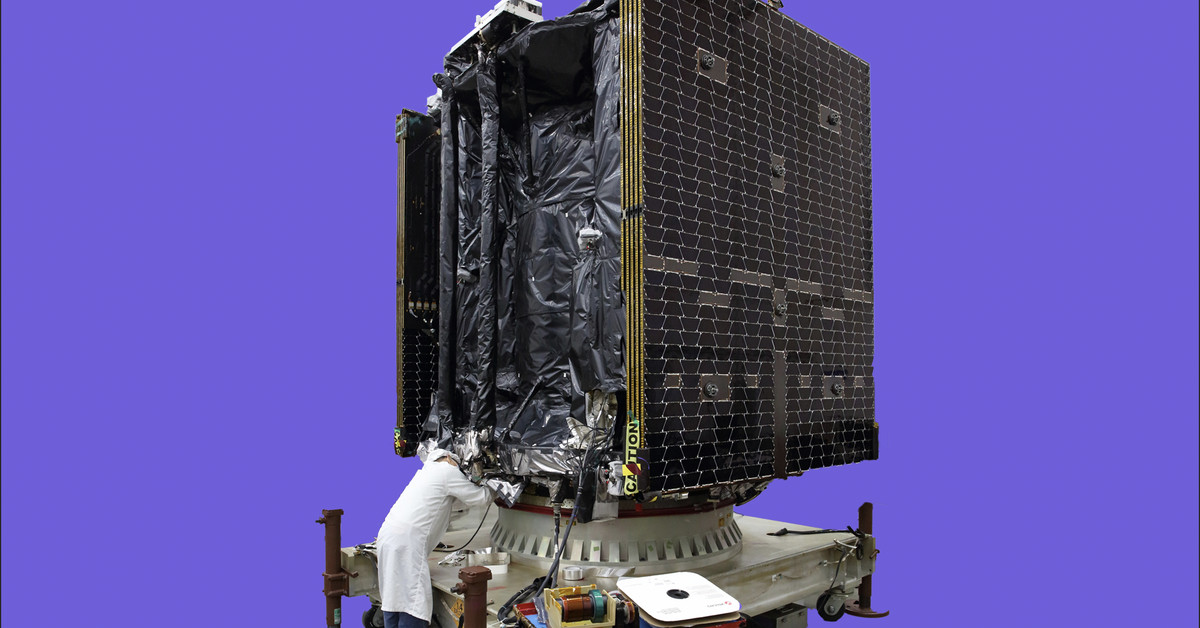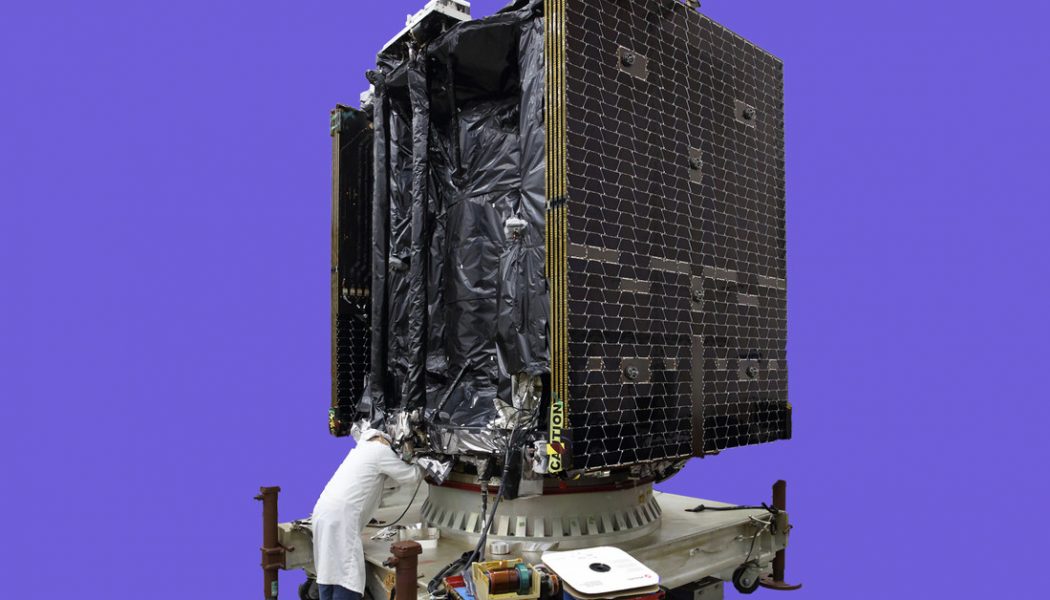
On Saturday, a Northrop Grumman spacecraft, designed to give a dying satellite a new lease on life, launched into space. Its objective is to latch onto an aging satellite that’s been in space for 16 years and prolong the old robot’s life in orbit by giving it a new set of engines and fuel.
The spacecraft is named MEV-2, for Mission Extension Vehicle 2. MEV-2’s predecessor was the groundbreaking MEV-1 satellite, which launched in October 2019. MEV-1 made history in February when it successfully grabbed hold of another satellite already in orbit, marking the first time that two commercial satellites had docked in space. MEV-1’s target was an out-of-commission communications satellite called Intelsat 901, which has been in space for nearly 20 years. After docking with Intelsat 901, MEV-1 nudged the satellite into a new orbit, allowing the spacecraft to start operating again and extending its life for at least five more years.
MEV-1 successfully demonstrated a concept known as satellite servicing — an emerging industry that is focused on sending handy satellites into space in order to fix, repair, or upgrade other satellites already in orbit. Now, with MEV-2, Northrop Grumman is going to try again. “It’s very similar,” Joe Anderson, vice president of operations and business development at Space Logistics, a wholly owned subsidiary of Northrop Grumman that oversees the MEV missions, tells The Verge. “MEV-2 is essentially a carbon copy of MEV-1 from a design standpoint.”
[embedded content]
However, MEV-2 will try a few new things during its time in space. For one thing, it’s targeting a different type of satellite than the one MEV-1 wrangled. Intelsat 901 was no longer functioning and was located in an orbit above Earth often referred to as the “graveyard orbit.” Satellites orbiting many thousands of miles above the planet are moved to the graveyard orbit when they run out of fuel so that they don’t get in anyone’s way when they become inoperable. MEV-1 plucked Intelsat 901 out of the graveyard orbit and put it back in a coveted region known as geosynchronous orbit — a path above Earth where satellites match the rotation of the planet and seemingly hover over the same patch of sky at all times. The geosynchronous belt is a fairly critical orbit for satellites, home to many communications and Earth-observing probes.
MEV-2 aims to meet up with another Intelsat communications vehicle called Intelsat 10-02, but this spacecraft is not in the graveyard. It’s still actively operating in geosynchronous orbit along with many other critical — and expensive — satellites. In fact, Intelsat 10-02 will be carrying communications traffic while MEV-2 attempts to dock next year. Anderson says they’ll let Intelsat’s customers know that they might experience a short outage from Intelsat 10-02 when MEV-2 latches on. “When we do that docking, it disturbs their pointing a little bit, but it should be very transient in nature,” Anderson says. “It should be pretty short; it certainly would be less than 20 minutes.”
MEV-2’s docking will use the same sensors and capture routine that MEV-1 used. However, MEV-2 won’t have to move Intelsat 10-02 to a new location. “We will simply dock to them, and then take over the orbit and attitude control and keep them in that same station keeping box that they’re in today,” Anderson says. Essentially, MEV-2 will act as a new engine and fuel tank, helping to keep Intelsat 10-02 stable for at least five more years. Intelsat 10-02 now is running low on fuel, so MEV-2 will ensure that the satellite can continue operating for a little while longer before it has to be moved to the graveyard.
[embedded content]
It’s possible that MEV-2 will stay attached longer if Intelsat wants to sign another contract. However, both MEV vehicles are designed to service multiple satellites over the next 15 years, according to Anderson. So other satellites might benefit from MEV-1 or MEV-2 in the future. Anderson didn’t divulge how much it costs to build an MEV vehicle, but Intelsat previously said the company will pay Northrop Grumman $13 million a year to have MEV-1 attached to Intelsat 901 for five years.
Anderson says that these satellite servicing missions are a “business growth area” for Space Logistics and Northrop Grumman. Moving forward, the company is focusing on a new type of servicer called the Mission Robotic Vehicle, or MRV, which should take satellite tune-ups to a whole new level. Thanks to a partnership with DARPA, MRV will be able to do what the MEV satellites can do, but it will also be able to attach “pods” onto satellites that provide propulsion on their own, extending the life of a satellite by up to six years. Anderson notes the MRV will really be a multiservice satellite, capable of doing various types of repairs apart from providing extra propulsions. “That robotic vehicle can do other types of services such as detailed inspections, full repair missions,” he says. “So if someone has a stuck solar array, or antenna, for example, we may be able to use our robotic system to do those deployments. It can also grab onto the client vehicles and tug them and relocate them to other orbits as well.”
The first MRV isn’t set to launch until 2023, so for now, MEV-2’s docking is the next big event for Space Logistics. Docking is slated for February or March 2021, at which point we’ll see if MEV-2 can replicate the historic docking of its predecessor, possibly moving the satellite servicing industry forward.










